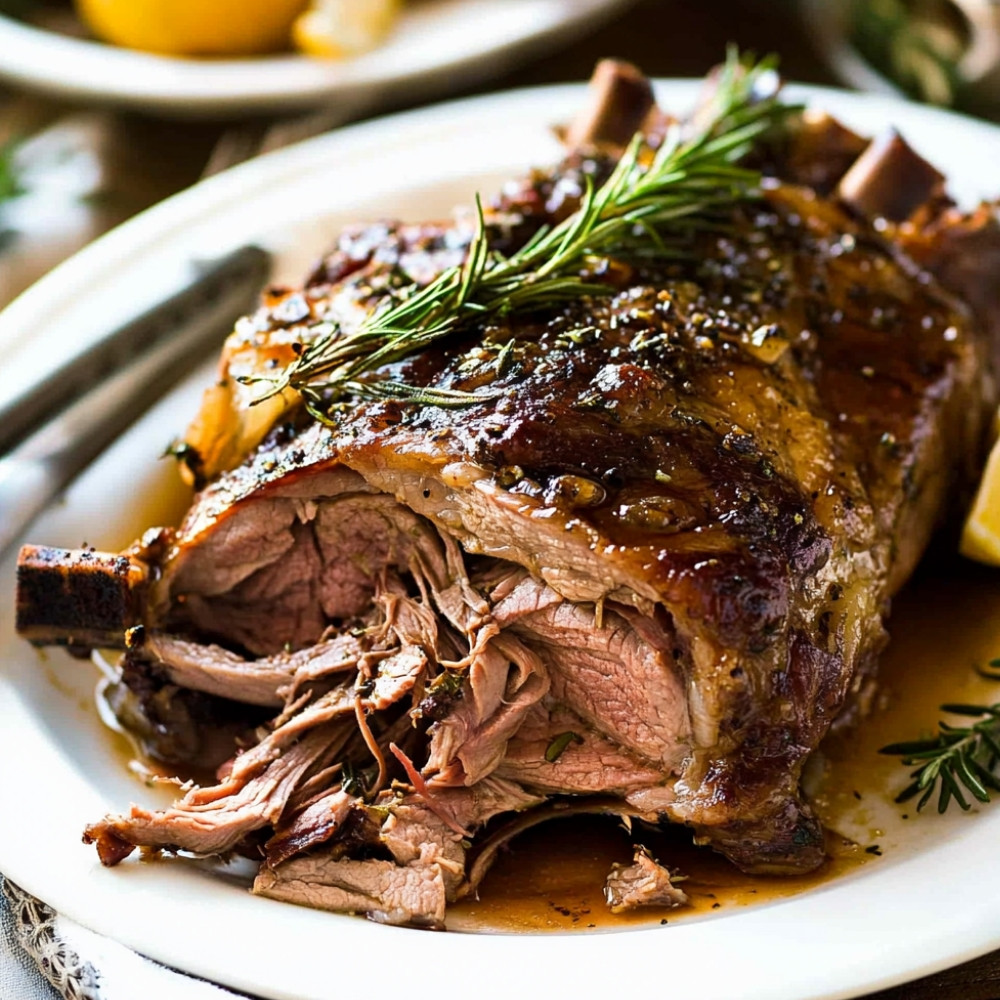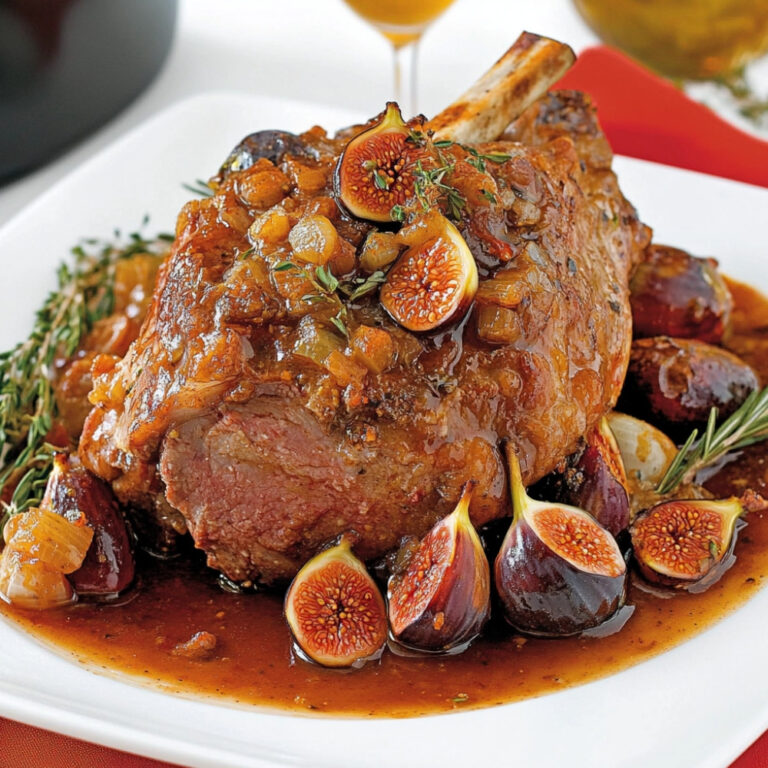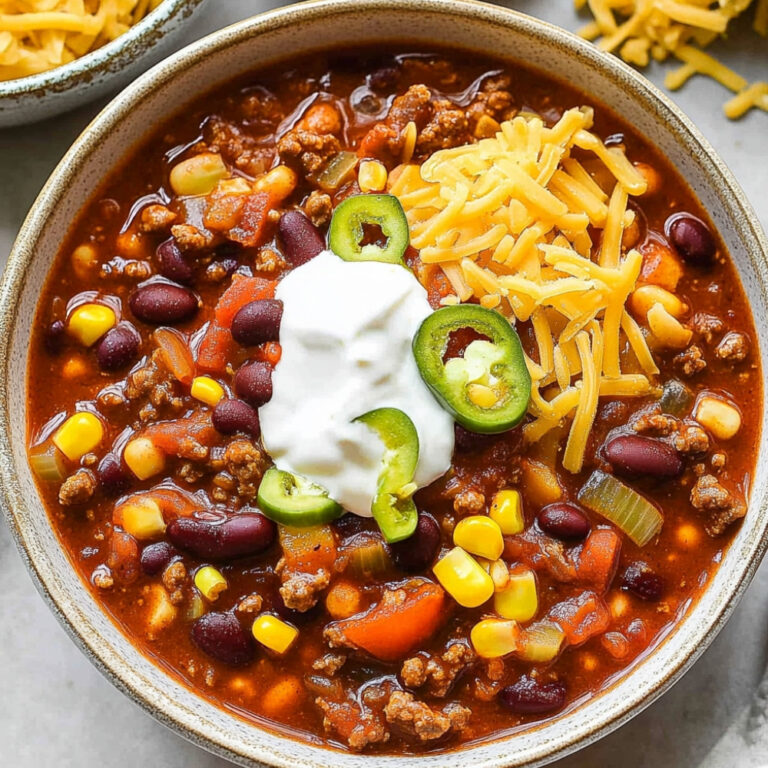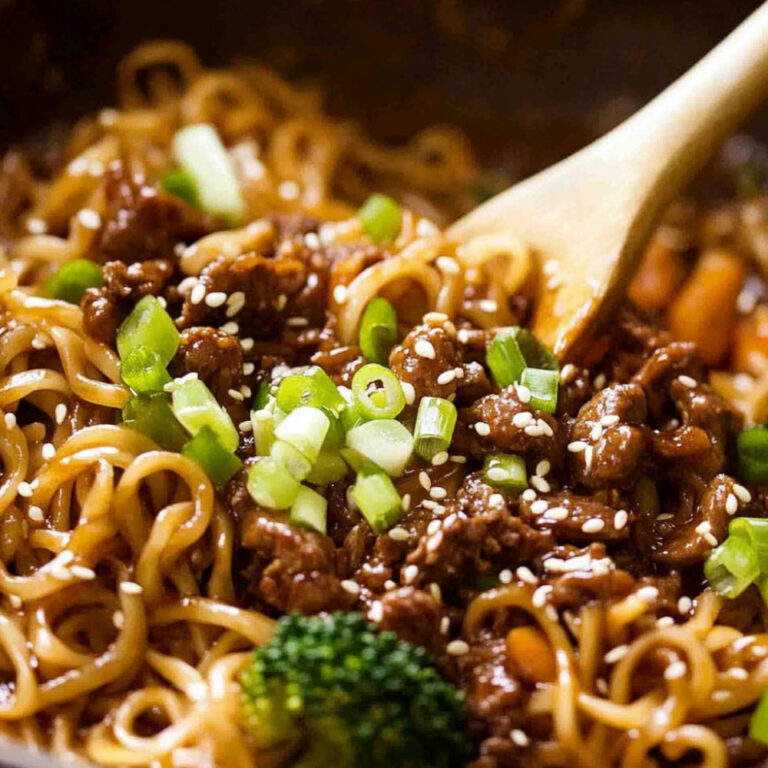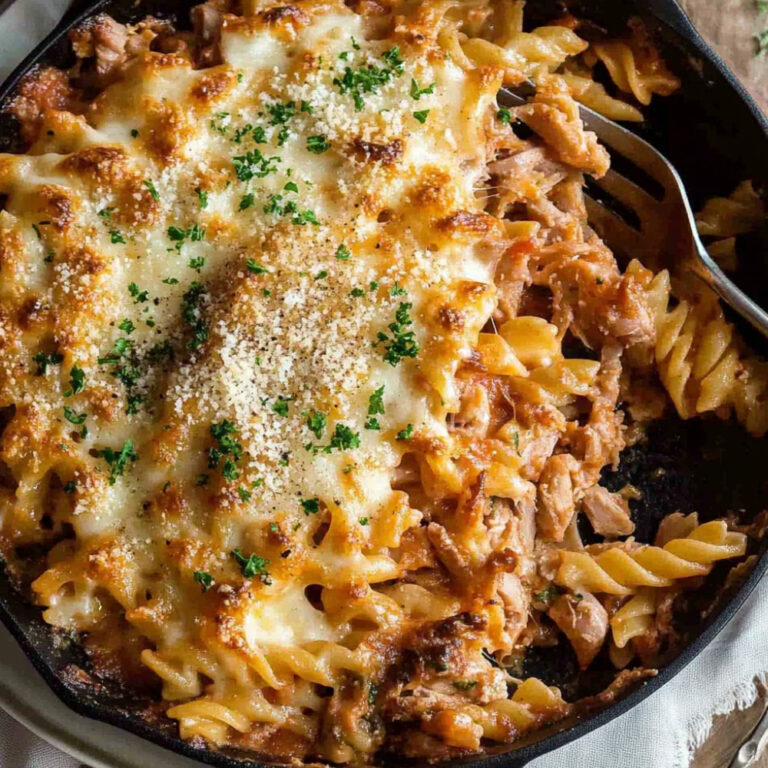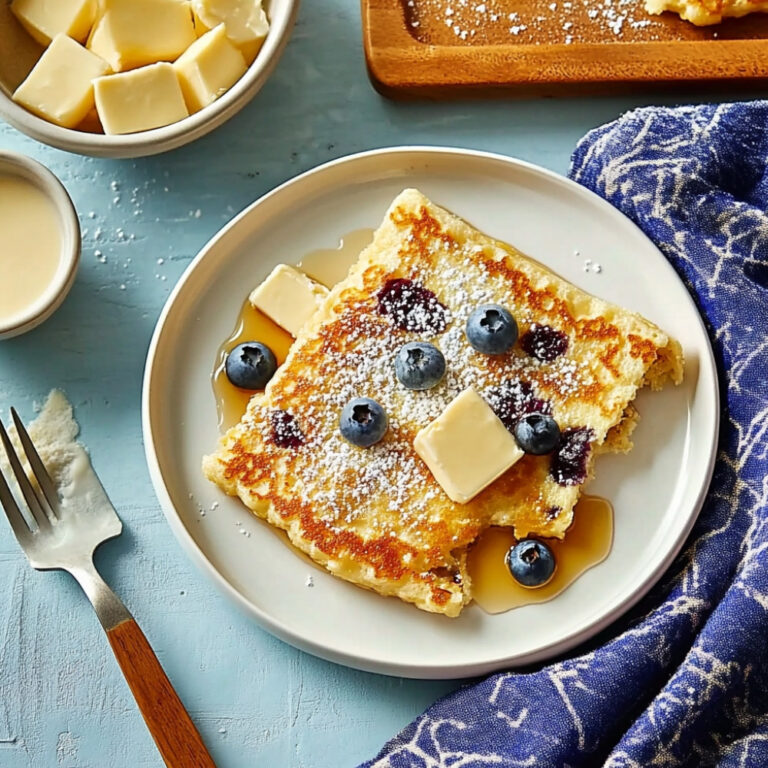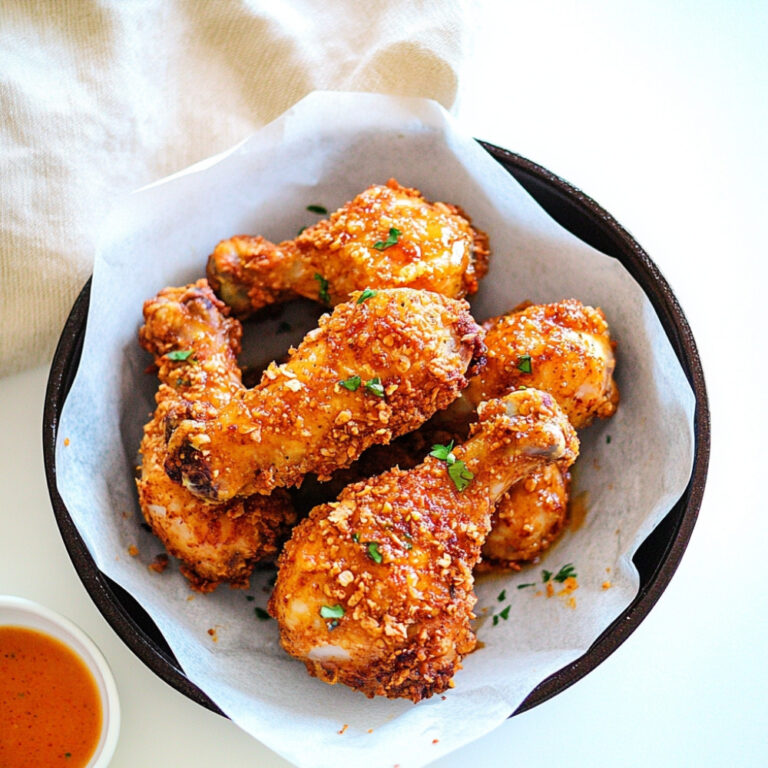Ultimate Tender Slow-Roast Leg of Lamb Recipe
So, let me tell you about this ultimate tender slow-roast leg of lamb recipe. Oh wow, just thinking about it brings me right back to family dinners where this dish was the star, you know? The lamb gets so tender, it practically falls apart, and the aroma… it fills your kitchen with that warm, inviting scent that just makes your heart sing. Seriously, it’s perfect for those cozy gatherings or special occasions when you want to impress but keep things a bit casual. Trust me, as you slice into it, it’s like magic on your plate. Everyone just gathers around, and it becomes this whole experience…
Why You’ll Crave It
- It’s like a hug from your oven—tender, juicy, and packed with flavor.
- The slow cooking brings out all those delicious, rich tastes of the herbs and garlic.
- It makes an effortlessly stunning centerpiece for any table—everyone will be gathering around!
- Leftovers, if there are any, work perfectly in sandwiches or salads the next day.
- It’s a dish that lets you spend more time with your family rather than in the kitchen… which is always a win!
My family fights over the last piece every single time… it’s become a bit of a tradition!
What You’ll Need
- Leg of lamb: about 2 to 2.5 kg, bone-in is best for flavor
- Salt: 2 teaspoons, just enough to season well
- Black pepper: 1 teaspoon, freshly cracked for that extra bite
- Olive oil: 2 tablespoons, to keep things moist
- Garlic: 4 cloves, minced, because garlic makes everything better
- Rosemary: 2 tablespoons, chopped, fresh if you can
- Thyme: 2 tablespoons, chopped—a nice earthy note
- Lemon: 1, zest and juice, for a bright contrast
- Vegetable stock: 1 cup, to keep the meat tender
- Onions: 2, quartered, they roast beautifully
- Carrots: 2, cut into pieces, for sweetness
- Potatoes: 500 g, chunky for roasting goodness
Easy How-To
Let’s Get Started!
First, you’ll want to make sure your leg of lamb is thawed, if it was frozen. Just… give it a good rinse and pat it dry, then trim any excess fat you might not want. You can always score the surface to let those flavors soak in even better. Next up, rub it all over with olive oil, salt, and pepper. And don’t be shy with the garlic and herbs either! Just really massage that seasoning into the meat, and squeeze some lemon juice on top for a nice zing. Then, preheat your oven to around 130°C (265°F)—low and slow is the name of the game!
Now, grab a roasting pan, place your seasoned lamb right in the center, and surround it with those lovely veggies—carrots, onions, potatoes… You want them to soak up all that magic happening. Cover everything tightly with foil to keep it moist while it cooks. Pop it in the oven and let it roast for about 4 to 5 hours. So, yes, it’s a bit of a wait, but oh boy, it’s totally worth it! During the last hour, take that foil off so the lamb can brown up nicely. Just baste it now and then with those glorious juices in the pan—your kitchen will smell like heaven! And check for doneness with a meat thermometer; for medium-rare, aim for about 55°C (130°F).
Once it’s done, don’t forget to let it rest for at least 20 minutes. I know… patience! But this is the part where those juices redistribute, and trust me, you want that juicy goodness. Then, it’s all about slicing against the grain into thick, delicious pieces… Lay them out on a platter with those roasted veggies and a drizzle of those pan juices. Your guests will be drooling before you even set it down!
Good to Know
- Choosing a good quality leg of lamb makes a huge difference—if you can, ask your butcher for a bone-in piece.
- You can totally play with the herbs—rosemary, thyme, oregano… whatever you love most!
- Oven temperatures can vary, so keep an eye on it and trust your meat thermometer; it’s your friend!
Serving Ideas
- Pair this beauty with a fresh, zesty salad or creamy garlic mashed potatoes to offset the rich flavors.
Top Tricks
- If you have some leftover lamb, use it for sandwiches or chop it up for a cozy shepherd’s pie later… yum!
Frequently Asked Questions
How long should I cook the leg of lamb?
Well, cooking time varies by the size of your lamb, but usually, 4 to 5 hours works well at that low temperature. Just keep checking for that tenderness!
What temperature should the oven be set to for slow roasting?
Your oven should be around 150°C (300°F). It’s low and slow—that’s how you get that melt-in-your-mouth goodness!
Can I cook a frozen leg of lamb?
It’s not ideal to cook from frozen, honestly. Thaw it in the fridge first—better texture and flavor!
What are good side dishes to serve with slow-roast lamb?
Roasted veggies, a light salad, or even classic mashed potatoes work beautifully—anything that complements that rich lamb.
How can I store leftovers?
Store those delicious leftovers in an airtight container in the fridge for up to three days or freeze for a rainy day!
Conclusion
The slow-roast leg of lamb is more than just a meal; it’s an invitation to gather around the table, share stories, and create memories that linger long after the last bite. Each tender slice tells a story of flavors mingling, and the joy of good company fills the room. Just trust this recipe, and I promise it will become a cherished tradition… one that you, and hopefully your family, will look forward to time and time again.
More recipes suggestions and combination
Roasted Vegetables
Pair your lovely lamb with seasonal roasted veggies like carrots and potatoes for a colorful, hearty side.
Mint Sauce
A fresh mint sauce gives a lovely zing that really enhances the lamb’s richness—do it if you can!
Garlic Mashed Potatoes
So creamy and comforting, they soak up the lamb’s juices perfectly, bringing everything together.
Greek Salad
A refreshing Greek salad with cucumbers and feta adds a delightful crunch and zing to counterbalance the richness.
Red Wine Reduction Sauce
If you’re feeling fancy, drizzle a red wine reduction over the lamb for that gourmet touch!
Herb Couscous
This fluffy side with some herbs makes for a light, fragrant complement, balancing well with those bold flavors.
Chocolate Tart
To finish off a rich meal, a decadent chocolate tart can be a perfect sweet ending… just trust me on this!

